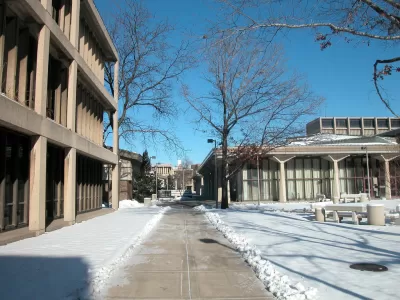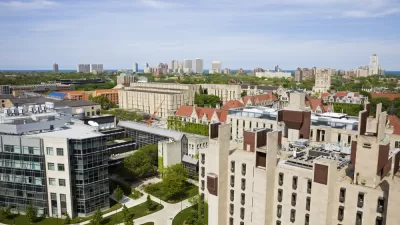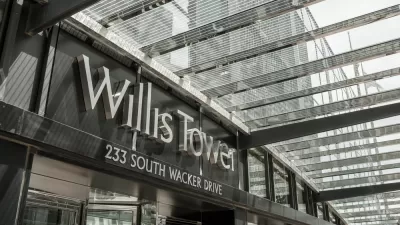UIC has laid out a master plan to rework "nearly every corner" of its campus. The goal is to accommodate more students and enhance the school's pride and identity.

In a piece rich with renderings, Rachel Hinton covers an extensive plan by the University of Illinois at Chicago to rework its campus. "The plan, which covers nearly every corner of its 311-acre campus, will bring changes to both its undergraduate and health sciences buildings. It comes as the university seeks to push enrollment from 32,000 to 35,000," Hinton writes.
According to the school's chancellor Michael Amiridis, the plan involves two five-year construction periods, with nine buildings planned for the first phase and "five or six" for the second. Total costs will exceed $1 billion, and groundbreaking on the first four buildings is set to take place within the next 18 months.
"Funding for that first set of buildings and renovations will come from four sources," Hinton writes. "Around 30 percent from public-private partnerships, 25 percent from bonds, another 25 percent from state financing and 20 percent from philanthropy."
The plan calls for a variety of new structures, including a freshman "living-learning center," renovations to a nearby CTA Pink Line stop, an "entertainment district," and a new soccer stadium, as well as updates to a dated central quad.
Amiridis said that "an environment like this [...] will help build pride and [enhance] the identity of the school, which is something the school has struggled with over the course of its 50 years."
FULL STORY: UIC master plan lays out university’s future, plans for growth

Planetizen Federal Action Tracker
A weekly monitor of how Trump’s orders and actions are impacting planners and planning in America.

Maui's Vacation Rental Debate Turns Ugly
Verbal attacks, misinformation campaigns and fistfights plague a high-stakes debate to convert thousands of vacation rentals into long-term housing.

San Francisco Suspends Traffic Calming Amidst Record Deaths
Citing “a challenging fiscal landscape,” the city will cease the program on the heels of 42 traffic deaths, including 24 pedestrians.

Amtrak Rolls Out New Orleans to Alabama “Mardi Gras” Train
The new service will operate morning and evening departures between Mobile and New Orleans.

The Subversive Car-Free Guide to Trump's Great American Road Trip
Car-free ways to access Chicagoland’s best tourist attractions.

San Antonio and Austin are Fusing Into one Massive Megaregion
The region spanning the two central Texas cities is growing fast, posing challenges for local infrastructure and water supplies.
Urban Design for Planners 1: Software Tools
This six-course series explores essential urban design concepts using open source software and equips planners with the tools they need to participate fully in the urban design process.
Planning for Universal Design
Learn the tools for implementing Universal Design in planning regulations.
Heyer Gruel & Associates PA
JM Goldson LLC
Custer County Colorado
City of Camden Redevelopment Agency
City of Astoria
Transportation Research & Education Center (TREC) at Portland State University
Jefferson Parish Government
Camden Redevelopment Agency
City of Claremont





























